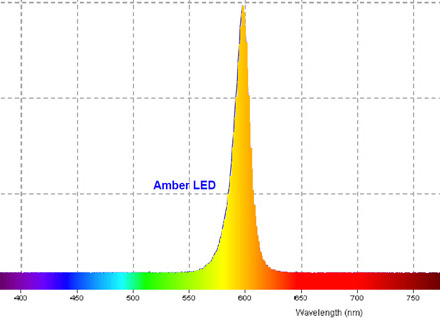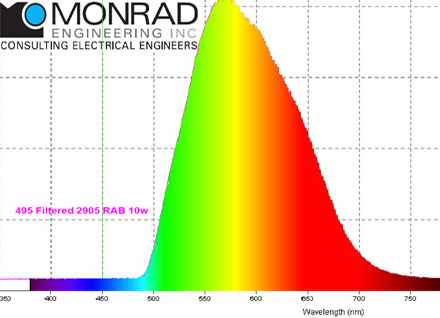Thanks
Interesting, did you use the 1200K setting for this measurment in f-lux?
I found a review of your screen @ Anandtech and it has an ANSI contrast of 796, a black level of 0.42 & a stock white level of 6704K.
This explains a lot or should i say most of the differences, with how we perceive the effectiveness of just using altered gamma ramps (like we do when we use a program like f.lux or Redshift).
My monitor (HDTV) Samsung 46C750 has a ANSI contrast of 3000-4000 depending on how high i set the backlight setting, and a black level of 0.03 cd/m2 & a white level of 6500K.
This means my monitor is 14 times better at blocking the backlight with a gamma ramp, to very warm like 1000-1200K with Redshift or f.lux, or a red & warm bias calibration from the 6500K normal white point if i want.
It is all in the black level or maximum contrast that the display can provide, that limit how effective it is at blocking different frequencies of light.
MG, your monitor has a contrast of ~1000 & if you lower the backlight setting it can get as black as 0.0861, that is pretty good for an IPS monitor, the nice thing about IPS monitors is they have the same contrast, or light blocking ability from all angels you view them from, my VA type HDTV has only the highest level when looked at straight on, as soon as you look at it from the sides it losses contrast, and most likely spills some of that blue light out in to the room.
@MG, you ask “what does the f.lux software actually do to control these leds?” And the thing is that f.lux doesn’t do anything to the leds or the backlight in a LCD display, the colour control in a LCD display comes from the colour filters in the red, green & blue sub pixels And how open or close those sub pixels are.
And the higher ability to close or open & let through light or not let through light, is what gives the perceived or measured contrast or light blocking ability in a LCD display.
And you say that “then the monitor seems to compensate” when f.lux kicks in. I think it is your eyes that compensates, i have used f.lux for years now, and recently added on in house lightning with the same effect.
And my experience is that the more you use it, the more the eyes get use to seeing the warmer colours & it almost look like it use to, at first it looked very very red, & without room lightning in a similar colour i never used the warmest setting, but with all lights the same colour, it doesn’t interfere with perceived contrast for me & i can read just as fast in 1200K as in 6500K.





